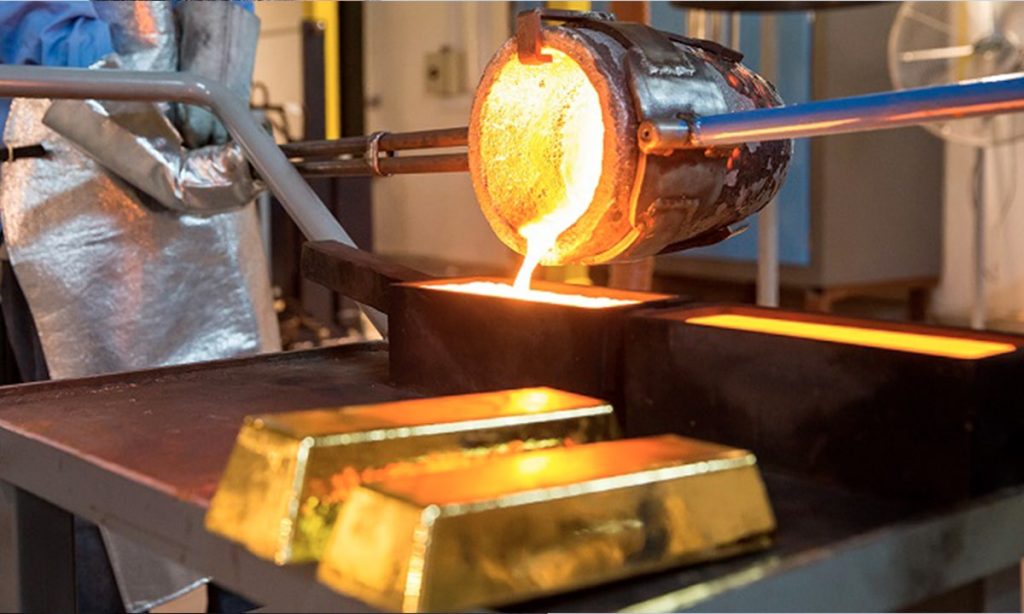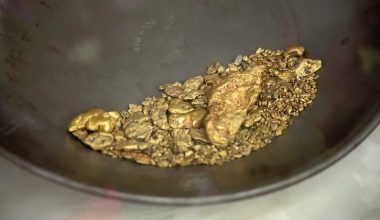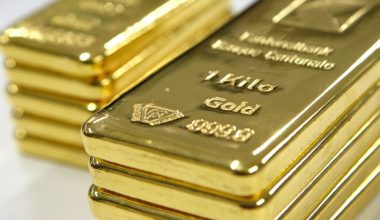From the time the mining company extracts gold-rich ore from the earth until a coin is minted or an ingot or piece of jewellery is made, it takes some time and industrial processes that have been evolving for centuries and today are becoming shorter and higher quality.
This process from the time the gold leaves the mine until it reaches your safe is known as the refining process, which converts a raw mineral, with numerous impurities, into metal with a purity of over 900 thousandths of a millimetre.
First of all, it should be made clear that what is extracted from the mines is not gold: it is tonnes of earth with a concentration of just a few grams of metal per tonne.
This soil is taken for processing to a special plant called a benefit plant, which separates the gold from the other materials. This plant is usually located close to the mining site, although it is not uncommon for several mines to share the same processing plant, even if this means higher costs and less profitability. In our case, we have one beneficiation plant per mining project.
Once this material that has been extracted from the mine has been processed, the result is a series of bars (they are not ingots, they are still raw) of a material called doré, which is actually an alloy of several metals, mainly gold and silver.
The composition of this doré can vary depending on the company producing it and the mine from which it was extracted.
These bars are sent to refineries, which are the facilities where the physical and chemical processes are carried out to remove impurities from the metal until it is almost pure.
About refineries
The main European refineries are concentrated in Switzerland, and in particular in the Italian-speaking canton of Ticino. Switzerland usually refines approximately 70% of the world’s gold each year.
The Good Delivery List of refineries accredited by the London Bullion Market Association (LBMA) brings together the world’s leading refineries.
Not every refinery in every country in the world is accredited and as you can see if you have accessed the list
Most of the gold circulating in Europe, in whatever form, comes from these four major refineries.
Once the refinery receives the doré bars from the mining company, they are weighed and melted to ensure that the metal is homogeneous, i.e. that there are no points of greater or lesser purity of the metal inside.
A sample of the melted bar is then taken and passed to the assay department, which determines the exact amount of gold and silver contained in the sample and thus in the doré bar.
When this quantity is determined, an ‘outturn’ document is sent to the mining company containing a statement of the weight of the doré bar, the percentage of gold and silver it contains and, based on this data, the amount of pure gold and silver that can be extracted.
The mining company, upon receipt of the document, then decides whether to sell the gold and silver to the refinery or to enter into a ‘loco swap’ with the refinery, which is an exchange of the precious metals that are in different locations, without the need to move them.
The doré bar then becomes the property of the refinery.
Refining process
The dore first undergoes a chlorine refining process, known as the ‘Miller process’. This process, named after the chemist who devised it, Francis Bowyer Miller, is used to refine gold to a high degree of purity.
It involves blowing a stream of pure chlorine gas over and through a crucible filled with molten gold containing impurities. These impurities, as well as silver and other metals that may be in the gold alloy, react with the chlorine to form silver chloride and other compounds, which are deposited on the surface.

The result of this process is 99.5% pure gold, which is then cast in moulds to form the 400 troy ounce (12.44 kg) banked bars used in international banking transactions.
The silver chloride obtained is then leached to remove the remaining metals, followed by electrolysis to obtain pure silver.
Pure gold
Returning to gold, sometimes the market demands that this metal has an even higher purity. In these cases, the 99.5% pure gold obtained by the Miller process is subjected to a new process, called the ‘Wohlwill process’, named after the German electrochemical engineer Emil Wohlwill.
It consists of using lower purity gold as the anode and subjecting it to an electrochemical reaction in which the cathode consists of 24-carat gold leaf or stainless steel.
Once the current is applied, the anode dissolves in the chlorine solution and the pure gold eventually coats the cathode.
The cathode is melted to produce gold granules of 99.999% purity. These granules are of different sizes in order to achieve the exact weight required to melt them into ingots.
The granules are combined to fill the moulds for smaller ingots, which range in weight from one kilo (32.15 ounces) to half an ounce (15.55 grams). These ingots go through a process similar to minting, which gives them their final rectangular shape, with the characteristic markings or designs of each refinery.

